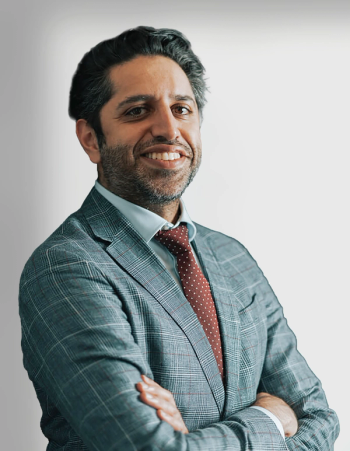
Chart the Changes in NMSC Prevalence and Procedural Treatments
Overall, non-melanoma skin cancer (NMSC) visits (all pooled specialties/areas) have been plateauing. However , metropolitan but not rural areas saw an increase in visits where NMSC was the chief complaint. However, the percentage of NMSC in rural areas that is managed by dermatologists and dermatologic surgeons is also on the rise, according to a presentation given at the 2022 American College of Mohs Surgery Annual Meeting.
Despite some general patterns, the landscape of non-melanoma skin cancer (NMSC) can be hard to read. A mix of macro directions and micro exceptions means that trendlines tend to be all over the map. However, some key indicators have emerged.
Speaking at the 2022 American College of Mohs Surgery Annual Meeting, Partik Singh, MD, MBA, a dermatology resident, and Sherrif F. Ibrahim, MD, PhD, assistant professor in the Department of Dermatology, both of the University of Rochester Medical Center in Rochester, New York, presented a clinical abstract that set out to develop a clearer picture of what is happening with NMSC in the United States.
Their cross-sectional study used data from the US Centers for Disease Control and Prevention’s National Ambulatory Medical Care Survey (NAMCS) from 1993 to 2015.1 Researchers this information for procedural treatment patterns and the prevalence of NMSC nationwide. The survey examined data for outpatient primary care and specialty physicians not employed by the federal government.
Multistage estimation served to correct for lack of responses and to decrease national estimate bias. The authors used ICD-9 codes to record procedures and mean annual NMSC visits.
NMSC Prevalence Changing Over Time
The findings helped to identify general directions for both prevalence and procedural treatment, but also revealed noteworthy contradictions.
For example, the data showed an initial increase in NMSC incidence in the period of the study. However, a drill-down analysis found it plateaued from 2011 to 2015 for patients in the Northeast, women, and Caucasians/non-Caucasians patients.
“A similar trend was seen for dermatology visits, but there was not much of a significant change in non-dermatologic surgical visits or primary care visits,” Singh said during the presentation. He explained that metropolitan areas are showing a consistent increase in NMSC visits every year, while non-metropolitan areas are not seeing much of a significant shift.
Who Treats NMSC?
What is changing in non-metropolitan areas is the choice of provider. Non-urban locales saw an increase in the number of dermatologists and dermatologic surgeons managing NMSC (as a percentage of all rural NMSC visits).
“Dermatologists start the study period seeing 40% of visits, but by the end they were managing more cases by 50%,” Singh noted.
Procedural Management and Predictors of Who Gets A Procedure for NMSC
Singh said there was a plateau in procedural management except for non-dermatologic surgeons in all geographic areas. Predictors for receiving a procedure included older patients, male patients, and treatment by a dermatologist.
“In comparison with calendar years 1993 to 2000, there were increased adjusted odds of procedures during 2001 to 2005 (1.87, P<0.001) and 2006 to 2010 (1.64, P=0.003) but not 2011 to 2015 (1.34, P=0.14), reflecting a plateau,” the researchers said.1
Disclosure
Singh and Ibrahim reported no relevant financial disclosures.
Reference
1. Singh P, Ibrahim SF. Prevalence and treatment patterns for nonmelanoma skin cancer in the United States. Presented at: 2022 American College of Mohs Surgery Annual Meeting; May 12-15, 2022; Philadelphia, Pennsylvania.
Newsletter
Like what you’re reading? Subscribe to Dermatology Times for weekly updates on therapies, innovations, and real-world practice tips.


















